Exploring Dynamic Watch Faces: Innovations in Personalization
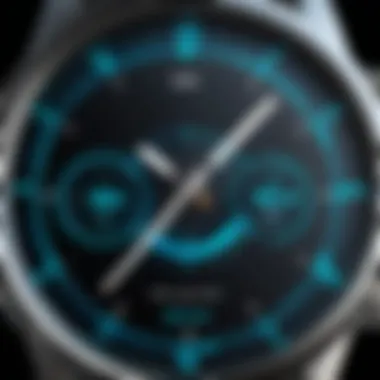
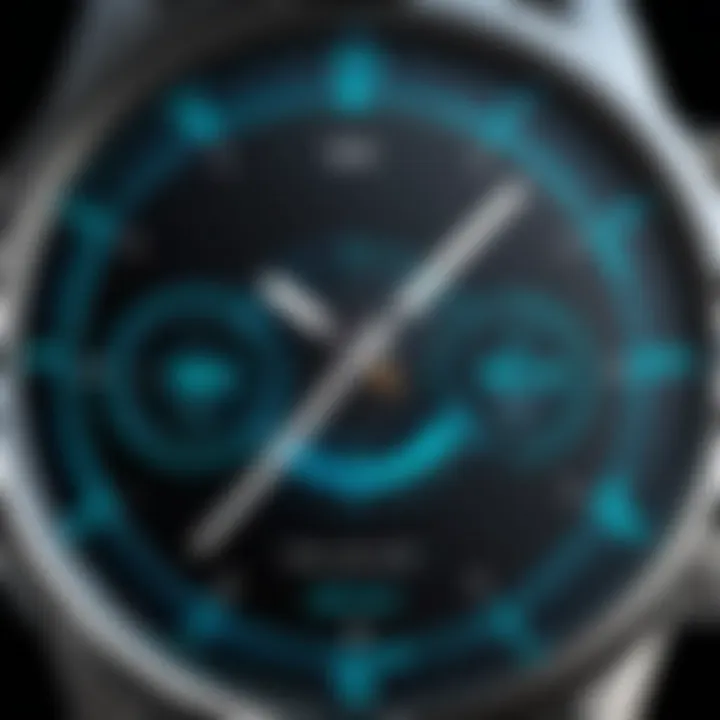
Intro
As the technology landscape evolves, wearable devices like smartwatches have become integral to daily life. Among these advancements, dynamic watch faces stand out due to their ability to enhance personalization and functionality. Users now expect not just timekeeping, but customizable interfaces that reflect their style and cater to their specific needs. This exploration into dynamic watch faces delves into their technological innovations, the design aspects that contribute to usability, and the broader implications for user experience.
Overview of the Technology
Dynamic watch faces are not merely aesthetic upgrades; they symbolize a significant leap in the evolution of wearable technology. These interfaces are designed to be interactive and versatile, allowing users to showcase their preferences while providing critical information at a glance.
Key Specifications
Several key specifications define dynamic watch faces, facilitating their functional capabilities:
- Resolution: High-resolution displays ensure clarity and detail, enhancing the viewing experience.
- Battery Efficiency: Advanced algorithms help maintain battery life, balancing performance with longevity.
- Customization Options: Users can select from a variety of layouts, colors, and features tailored to their activities and interests.
- Integration Capabilities: Support for third-party apps allows synchronization with various services, further broadening the watch's usefulness.
Unique Selling Points
Dynamic watch faces offer several unique selling points that appeal to tech-savvy individuals:
- Personalization: Users can reflect their personality through customizable themes and layouts.
- Real-time Information: Access to real-time updates, such as weather, notifications, and health statistics, enhances functionality.
- User Engagement: Interactive elements keep users engaged, as they can change the interface based on mood or activity.
"Dynamic watch faces act as both a functional tool and a personal statement, reshaping how we interact with technology on our wrists."
Design and Build Quality
The design and build quality of smartwatches significantly impact user interaction. Dynamic watch faces play an essential role in this aspect, combining aesthetics with usability.
Material Used
The materials in watch construction influence durability and user comfort. Common materials include:
- Aluminum and Stainless Steel: Provide robustness while maintaining a lightweight feel.
- Plastic and Composite Materials: Offer a more affordable option without compromising on style.
- Glass and Sapphire Crystal: Enhance screen durability against scratches and impacts.
Ergonomics and Usability
Ergonomic design considers how comfortably the watch fits on the wrist and how easy it is to navigate the interface.
- Form Factor: A slim design reduces bulk, allowing for all-day wear.
- Touch Sensitivity: Precise touch responsiveness ensures that users can interact with features seamlessly.
- Layout Accessibility: Organizing information logically helps users find the data they need quickly and efficiently.
In summary, dynamic watch faces offer both innovation in personalization and practical functionality. They represent a significant step forward in wearable technology, reflecting both individual taste and lifestyle needs. The integration of real-time information, customization, and modern design ensures that users can derive more from their devices than ever before.
Preamble to Dynamic Watch Faces
Dynamic watch faces represent a crucial evolution in smartwatch technology. Their significance lies in blending functionality with personalization, addressing individual user needs in a way that traditional watch faces fail to achieve. These innovative designs not only enhance aesthetic appeal but also offer varying degrees of interactivity and utility.
Definition and Overview
Dynamic watch faces are essentially digital interfaces on smartwatch displays that change based on user input or pre-set conditions. Unlike static designs, dynamic watch faces offer adaptability; they may display information such as time, weather updates, fitness metrics, and more, varying their visuals to fit different contexts. For example, a watch face might shift color during a specific time of day or alter layout based on upcoming appointments. This flexibility allows users to customize the experience, making the smartwatch a more integral part of their daily routine.
Comparison with Traditional Watch Faces
When comparing dynamic watch faces to traditional watch designs, the differences become evident. Traditional watch faces are fixed in both appearance and function. Users might enjoy the classic charm of analog displays, but these watch faces lack responsiveness and engagement.
In contrast, dynamic watch faces utilize modern technology to provide real-time information and interactive elements. This can significantly enhance user experiences. Dynamic displays cater to user preferences and needs through a variety of features, such as:
- Real-Time Data: Instant access to notifications, calendar events, and health stats.
- Customizability: Users can often choose themes, colors, and layouts that reflect their personality.
- Interactivity: Many dynamic watch faces allow users to tap or swipe for additional information or functionality.
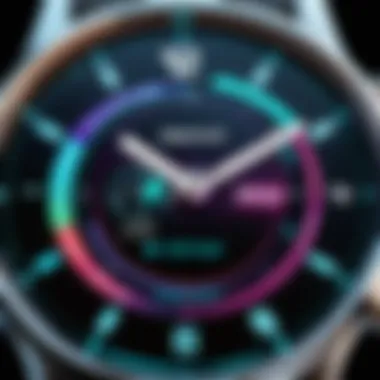
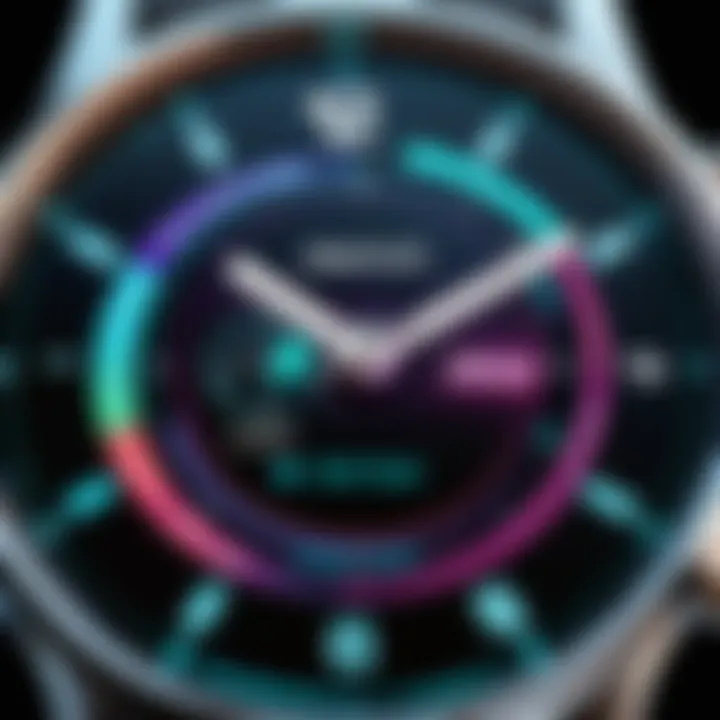
"Dynamic watch faces represent a significant evolution in how consumers interact with wearable technology, aligning with the rise of personalized digital experiences."
Technological Advancements in Watch Face Design
Technological advancements in watch face design represent a pivotal component of the evolving landscape of wearable technology. These innovations enhance both functionality and user experience, making them a key discussion point in understanding dynamic watch faces. With rapid developments in software, hardware, and user interface design, these aspects not only redefine aesthetic appeal but also push the boundaries of what can be achieved through personalized technology.
Software Innovations
Software innovations stand at the forefront of transforming traditional watch faces into dynamic, interactive interfaces. These advancements include the development of more sophisticated operating systems and applications that allow for real-time data display. Specifically, platforms such as Wear OS by Google enable a wide range of apps that can be tailored to user preferences and needs. Furthermore, over-the-air updates enhance existing watch faces, keeping them relevant and functional without necessitating a hardware upgrade.
The role of an optimized software architecture cannot be overstated. It harnesses the power of artificial intelligence and machine learning algorithms to personalize user interactions. For instance, some software can learn a user’s habits and suggest relevant information or functions based on historical data. This adaptability increases the overall functionality, enabling users to engage with their smart watches more intuitively.
Hardware Capabilities
The hardware capabilities of modern smartwatches have seen significant improvements, allowing for richer watch face designs that include animated features and high-resolution graphics. Advances in screen technology, such as OLED displays, contribute to the vibrancy and clarity of dynamic watch faces. Such displays not only use less power but also improve visibility in various lighting conditions, thus enhancing user experience.
Moreover, the integration of more powerful processors facilitates resource-intensive applications, allowing for seamless multitasking and enhanced responsiveness. As manufacturers continue to innovate, the potential to incorporate sensors that track health and fitness metrics directly into the watch face grows. This means users can gain insights at a glance, without navigating through multiple menus.
User Interface Developments
User interface developments play a critical role in how effectively users interact with their dynamic watch faces. A well-designed user interface (UI) ensures that information is displayed clearly, and actions are easy to perform. With touchscreens becoming commonplace, developers focus on optimizing gestures and interactions.
For example, swiping or tapping opens new apps or information quickly. A crucial area of focus is ensuring that icons and text are legible and that the overall layout promotes intuitive navigation. Many brands are also experimenting with voice commands, adding an additional layer of accessibility.
Additionally, responsiveness to user preferences is a key trend in UI development. The ability for users to customize elements like colors, layouts, and information displayed fosters a sense of ownership and personalized experience. As reported in many discussions on platforms such as reddit regarding smartwatch trends, customizability often impacts user satisfaction significantly.
"The key to a user-friendly interface is ensuring users can interact naturally with the technology, reflecting their individual preferences and needs."
Through these technological advancements, the dynamic watch faces continue to redefine not just how we perceive time but also how we engage with our devices, allowing for a deeper integration of technology into our daily lifestyles.
Customization and Personalization Features
Customization and personalization are at the very core of the appeal of dynamic watch faces. They allow users to tailor their devices to fit their unique lifestyles, interests, and tastes. Unlike traditional watch faces that often offer limited options, dynamic watch faces present a myriad of possibilities. Users can adjust colors, layouts, and even the complexity of information displayed. This personalization not only enhances aesthetic value but also increases user engagement, making the experience more pleasant.
Creating Unique Experiences
Creating unique experiences through dynamic watch faces can significantly influence user satisfaction. Users today seek devices that reflect their individuality. Dynamic watch faces enable users to select designs that resonate personally with them. This goes beyond mere visual appeal; it’s about the experiential connection users have with their devices.
Moreover, the ability to frequently update or change watch face designs ensures that users remain engaged. For example, someone who enjoys fitness may opt for a watch face that emphasizes health metrics, while a business professional might prefer designs that are more classic and understated. Options are vast and vary from minimalist styles to intricate graphical representations, offering something for every taste.
Integration with User Data
Integration with user data is another key component of dynamic watch face customization. Many modern smartwatches analyze user habits and preferences, adapting watch face displays accordingly. For instance, based on activity levels, a watch might highlight health-related statistics for a user who exercises frequently. This level of integration enhances the value of the wearable technology by ensuring that the most relevant information is readily available without any manual adjustments.
Additionally, user data can help suggest themes or layouts based on past choices. This predictive capability makes the overall experience more intuitive and user-friendly.
"Dynamic watch faces harmoniously blend aesthetics with practicality, creating a truly personalized experience that can adapt as the user’s needs change."
Themes and Visual Styles
Themes and visual styles provide a fascinating dimension to dynamic watch faces. Brands such as Garmin and Fossil have introduced various themed watch faces reflecting seasons, events, or even cultural trends. Users can select a theme that aligns with their current mood or occasion, contributing to a more immersive user experience.
Visual styles range from abstract art to portrait formats, catering to a wide audience. Users may desire sleek, professional styles for work while opting for vibrant and artistic designs during leisure times. This level of flexibility supports a dynamic lifestyle, appealing to those who have diverse interests. Through themes and styles, dynamic watch faces evolve from mere tools to personal companions, resonating with users on multiple levels.
The Role of Dynamic Watch Faces in Wearable Technology
Dynamic watch faces are not just aesthetic upgrades; they serve as a pivotal aspect of wearable technology. They enable users to access information swiftly while still maintaining a personal touch. The transition from traditional watch faces to dynamic versions signifies a broader shift in how technology integrates with daily life.
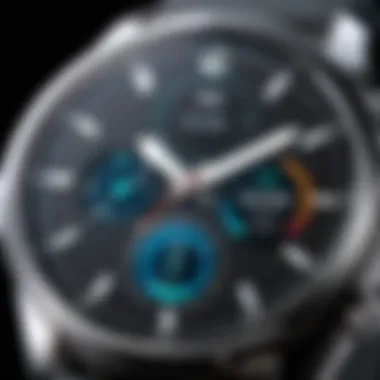

Enhancing Functionality
Dynamic watch faces offer advanced functionality that traditional faces cannot match. A user can customize what information they want to see, whether it is notifications, health metrics, or weather updates. This accessibility is beneficial in multitasking environments where quick info retrieval is crucial.
Users can also benefit from interactive elements present on these watch faces. For instance, users can tap on various icons to manage settings or access applications directly. This interactivity enhances efficiency and allows users to engage with their devices in more meaningful ways. Features such as customizable shortcuts also empower users to arrange their most-used functions, putting them at their fingertips.
More importantly, dynamic watch faces often come with health tracking capabilities. Users can monitor heart rates, sleep patterns, and even stress levels. This real-time data gathering transforms a mere decorative element into an essential health tool. Many wearable devices, like the Apple Watch or Fitbit, exemplify this trend by integrating comprehensive health monitoring within their dynamic interfaces.
Impact on User Engagement
The personalized nature of dynamic watch faces significantly boosts user engagement. People are increasingly interested in how technology fits their lifestyles. With these watch faces, users can curate what is displayed according to their preferences and daily routines. This level of customization ensures that the information is relevant and timely, thus fostering a more engaged user base.
The emotional connection formed through personalization cannot be overlooked. Users are likely to feel a stronger bond with their devices, which can translate into higher usage rates. This attachment manifests in users frequently interacting with their watch, ultimately leading to enhanced functionality being utilized more effectively.
"Dynamic watch faces resonate with users because they reflect personal choices, improving how consumers relate to their wearable technology."
Furthermore, feedback mechanisms are becoming common in dynamic watch face designs. Users can modify displays based on their interactions, leading to an adaptive user experience. This continuous evolution based on user preferences drives attachment, encouraging users to explore further capabilities of their devices.
Market Trends in Dynamic Watch Faces
The emergence of dynamic watch faces represents a critical shift in how users interact with wearable technology. Understanding the trends shaping this market is essential. The significance of market trends in dynamic watch faces goes beyond mere aesthetics. They reflect user preferences and technological innovation that enhances daily life. Key considerations include consumer demand, integration of advanced features, and market-leading brands.
Growing Consumer Demand
The growing consumer demand for dynamic watch faces directly correlates with the broader interest in personalization within the tech sphere. As users seek devices that cater to their preferences, dynamic watch faces offer functionality and visual appeal. Potential customers want more than the traditional static options. They crave diversity in design, capabilities, and adaptability.
- The rise of smartphone integration has led to expectations for seamless connectivity and dynamic experiences.
- Users are increasingly aware of the feedback loops between their wearables and their lifestyle choices.
- Customization options entice tech-savvy buyers looking for individuality in their devices.
This trend indicates a shift towards a more user-centric approach, where consumers demand products that resonate with their unique personalities and needs.
Leading Brands and Offerings
In response to this growing demand, several leading brands have conscientiously developed their offerings. Companies like Apple, Samsung, and Garmin have pioneered dynamic watch face technology. Their products showcase a variety of features designed to enhance functionality and aesthetic flexibility.
Each brand aims to offer something unique:
- Apple focuses on seamless integration with its ecosystem, often updating their watch faces to respond to user behavior.
- Samsung brings dynamic designs to its Galaxy series, emphasizing customization options that appeal to a range of users.
- Garmin targets fitness enthusiasts with watch faces that prioritize activities and health metrics.
This competitive landscape stimulates innovation and encourages consumers to explore diverse functionalities.
"The evolution of watch faces illustrates a growing commitment to personalization in wearable technology."
Understanding these market trends is crucial for both consumers and developers as they navigate the dynamic landscape of wearable technology. Enlightening these trends aids in foreseeing what features will dominate the market in the future.
Health Monitoring Integration
Health monitoring integration in dynamic watch faces represents a significant shift in wearable technology, merging convenience with functionality. This functionality is essential because it allows users to track health metrics in real time, thus empowering them to take charge of their wellness. Dynamic watch faces serve as the interface through which users can access crucial health data, enhancing their overall smartwatch experience.
Tracking Wellness Metrics
Dynamic watch faces can provide detailed insights into various wellness metrics, such as heart rate, steps taken, and sleep quality. The readability and design of these watch faces facilitate easier interpretation of data at a glance. For instance, the watch face can display a colorful bar graph showing daily step counts. It can also have icons indicating heart rate variability or stress levels.
The integration of health monitoring features satisfies a growing market demand for personal health awareness, especially as fitness tracking becomes an essential part of modern lifestyles. Users can customize their watch faces to highlight the metrics that matter most to them, improving engagement and motivation. Regular monitoring can lead to better health choices and increased accountability, especially for fitness enthusiasts or individuals managing health conditions.
Real-Time Alerts and Notifications
One of the most compelling features of dynamic watch faces is their ability to deliver real-time alerts and notifications directly related to health metrics. For example, users can receive notifications about abnormal heart rate patterns or reminders to move after long periods of inactivity. This capability not only enhances user awareness but also promotes proactive health management. Users can configure settings to prioritize alerts that align with personal health goals.
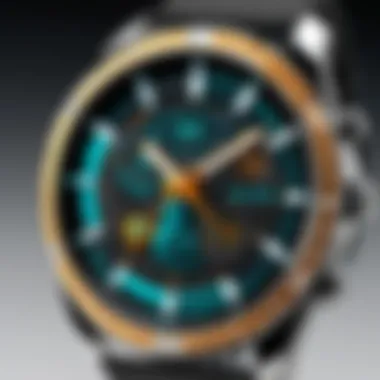
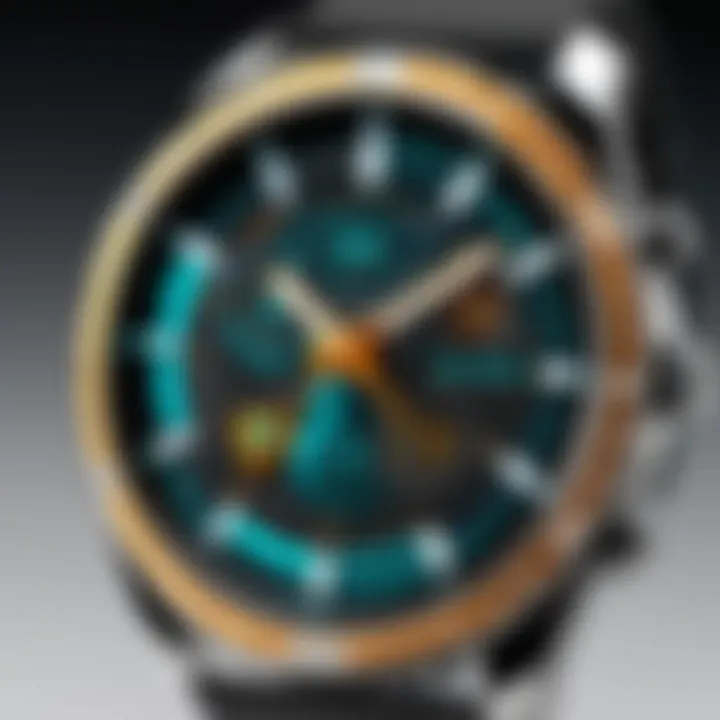
Moreover, the immediacy of real-time notifications can lead to timely responses to health concerns. For those using the watch for fitness training, alerts like heart rate zones help in optimizing workout intensity in real time. In essence, the integration of dynamic watch faces with health monitoring systems offers a comprehensive tool for managing health, making it an invaluable resource for users aiming for a healthier lifestyle.
Having health monitoring features integrated into dynamic watch faces is not just about being fashionable but about allowing users to take actionable steps towards better health.
As dynamic watch faces continue to evolve, the integration of health monitoring capabilities will likely play a crucial role in shaping future wearable technology.
Challenges and Limitations
While dynamic watch faces offer significant advancements in personalization and functionality, they are not without their challenges and limitations. Understanding these obstacles is crucial for manufacturers and users alike. Technological constraints and user experience issues can hinder the full potential of these features. Key aspects include battery life and user interface complexity.
Battery Life Concerns
One of the most pressing challenges in the execution of dynamic watch faces is their impact on battery life. The continuous operation of animated graphics and real-time updates necessitates more energy than static designs. This can lead to a user experience where frequent charging becomes a requirement rather than a convenience.
- Energy Consumption: High energy consumption is a critical factor. Dynamic watch faces can drain the battery quickly. Users may find themselves needing to charge their devices more often, which detracts from the overall experience.
- Display Technologies: Different display technologies like OLED or LCD have varying impacts on battery performance. OLED screens, for example, may conserve energy when displaying darker backgrounds, whereas LCDs generally consume more power due to constant backlighting.
Despite advancements in battery technology, manufacturers need to find a balance. Increasing battery efficiency while maintaining vibrant, dynamic visuals is an ongoing challenge. Consequently, users may need to prioritize between aesthetics and longevity when choosing a watch face.
User Interface Complexity
Another significant hurdle in the realm of dynamic watch faces is user interface complexity. While customization is a hallmark of these designs, it can lead to confusion for users.
- Overwhelming Options: The sheer number of customization options may overwhelm some users. Too many choices can complicate the user experience, making it difficult to navigate through features effectively.
- Learning Curve: New users might face a steep learning curve. Understanding how to maximize the potential of dynamic watch faces requires time and patience. This can result in frustration, particularly for those less experienced with technology.
To address this issue, it’s essential that developers implement intuitive designs and user-friendly interfaces. Streamlining the customization process will help users take full advantage of the dynamic features without feeling perplexed.
Future Perspectives on Dynamic Watch Faces
The increasing integration of dynamic watch faces into everyday technology presents a pivotal moment in the evolution of user experience. These watch faces hold potential that extends beyond mere aesthetics. In examining future perspectives, it is essential to consider how advancements in technology will shape personalization and functionality. The interplay between consumer preferences and technological capabilities will define how dynamic watch faces evolve, making this topic highly relevant for both developers and users alike.
Potential Developments
Future developments in dynamic watch faces are likely to be driven by advancements in several key areas:
- Artificial Intelligence: With the rise of AI technology, dynamic watch faces may become more intuitive, adapting to users' daily routines and preferences. This could lead to watch faces that change based on time of day, location, or even mood.
- Augmented Reality Integration: As AR technology continues to mature, it could be possible to overlay additional information or visual elements onto the watch face. This would decrease the need for users to rely on their smartphones for notifications and enhance real-time experiences.
- Improved Battery Technology: Enhanced battery life will be crucial in ensuring that dynamic watch faces can remain active and utilize their capabilities without draining the watch's power too quickly.
- Expanded Health Features: Ongoing research in health monitoring could lead to dynamic watch faces that provide real-time metrics tailored specifically to the user’s health needs. This might include stress levels, hydration indicators, or heart rate fluctuations, further enhancing the functionality of wearables.
"As technology progresses, the potential for dynamic watch faces to adapt to user behavior and needs will significantly alter the way we engage with wearable devices."
User Trends and Preferences
Understanding user trends and preferences is vital in shaping the future of dynamic watch faces. Some important considerations include:
- Desire for Customization: Users are increasingly looking for ways to customize their devices. A significant trend is tailoring watch faces that reflect individual style, mood, or occasion. This may push developers to offer a greater variety of themes and design options.
- Focus on Usability: While aesthetics are crucial, users prioritize how functional and useful they find dynamic watch faces. Simple interfaces that provide essential information at a glance will be pivotal for widespread adoption.
- Social Incorporation: Users are more connected than ever. Future dynamic watch faces may incorporate social media updates or notifications, allowing users to interact seamlessly with their networks without pulling out their smartphones.
- Sustainability Concerns: As consumers become more environmentally conscious, they may prefer smartwatches that incorporate eco-friendly materials and practices, which may also apply to the design of dynamic watch faces.
The convergence of these elements—technological advancements, user demands, and sustainability—will shape the narrative surrounding watch faces in the years ahead. As manufacturers take note, the dynamic watch faces of tomorrow will likely serve not only as personal gadgets but also as essential tools for life management.
Culmination: The Ongoing Evolution
The exploration of dynamic watch faces reveals an exciting trajectory of innovation in personalization and functionality. As technology evolves, these watch faces signify more than mere aesthetic appeal. They represent an integration of advanced features and user preferences that redefine how consumers interact with their devices. The ongoing evolution is marked by continuous enhancements in design, technology, and user experience.
Summary of Key Points
Dynamic watch faces have grown significantly in recent years. Here are the essential points to remember:
- Technological Progress: Innovations in software and hardware have enhanced the capabilities of dynamic watch faces. They now offer users more customization options and seamless connectivity.
- Customization Features: Users can tailor watch faces to reflect personal tastes. This adaptability caters to unique lifestyles and preferences, making the experience truly personal.
- Health Monitoring: The integration with health tracking metrics illustrates the practical benefits of dynamic watch faces in monitoring wellness and fostering proactive health management.
- Market Trends: Consumer demand for dynamic features is on the rise. Brands are responding with diverse offerings that cater to these preferences, driving competition and innovation.
"Dynamic watch faces are not just a trend but a representation of where wearable technology is headed."
Implications for Future Wearable Technologies
The implications of these advancements are vast and multifaceted. Here are some key factors to consider for future wearable technologies:
- Enhanced User Experience: As more personalized features become available, users will expect a higher level of interaction. This expectation will encourage companies to innovate further, leading to even more advanced and intuitive interfaces.
- Sustainability and Efficiency: Future designs will need to address concerns such as battery life and energy consumption. Improved technologies may lead to longer-lasting devices that require less frequent charging while still providing rich functionalities.
- Interconnectivity: The blending of devices will likely continue, facilitating a seamless user experience across all wearable technology. This interconnected ecosystem can help enhance health metrics and provide users with a comprehensive overview of their health data at their fingertips.
- Market Demands: As dynamic watch faces appeal to a broader audience, developers must prioritize inclusivity in design. This entails crafting functionalities that cater to various lifestyles and user requirements.







